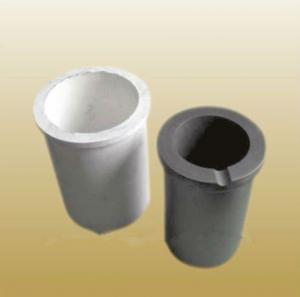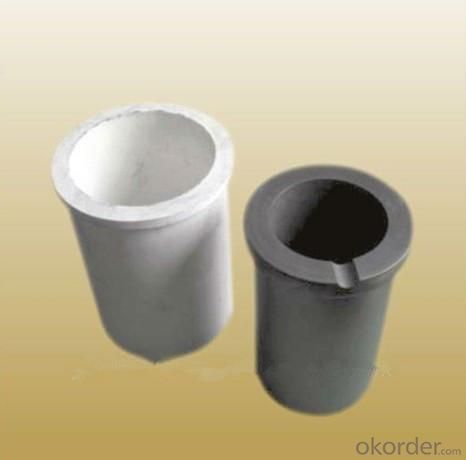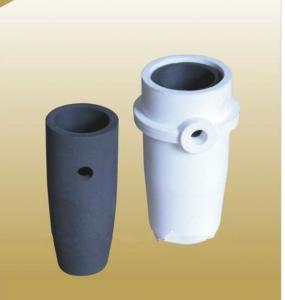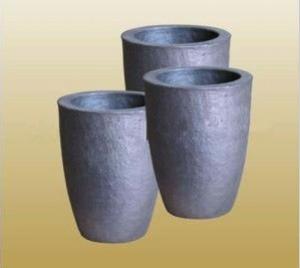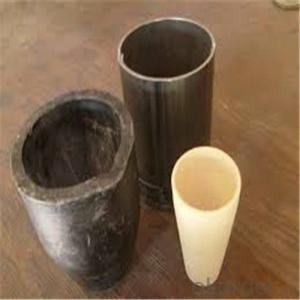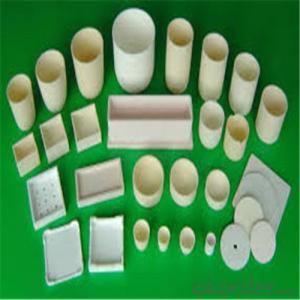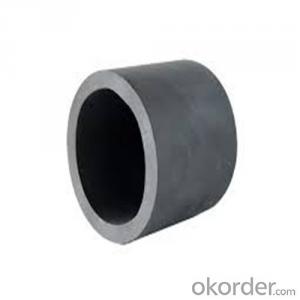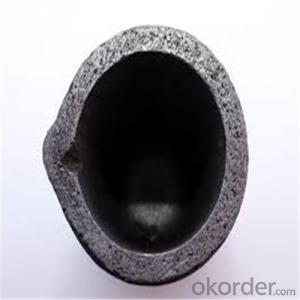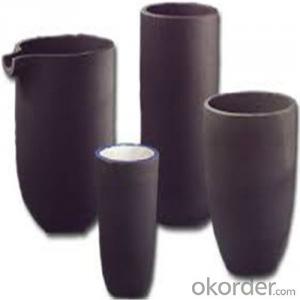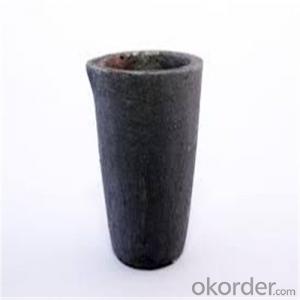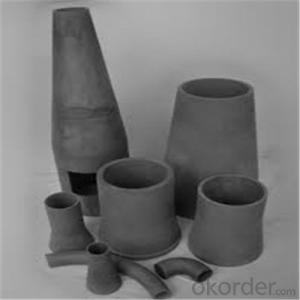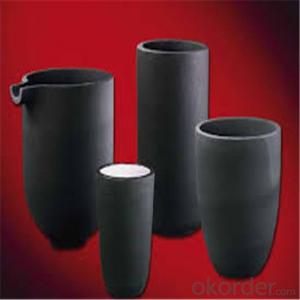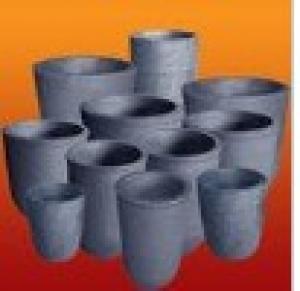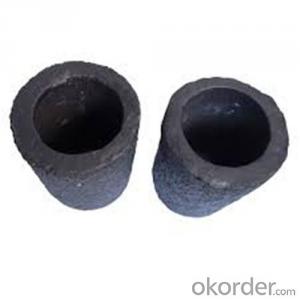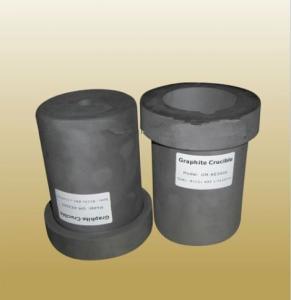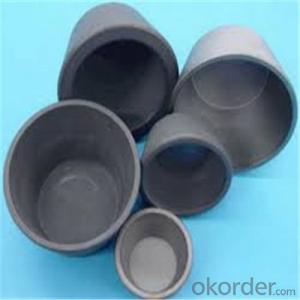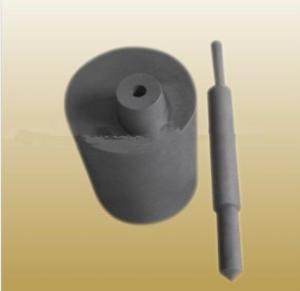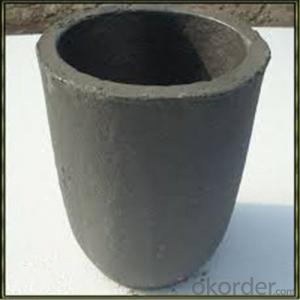Graphite Induction Melting Crucible Tongs
- Loading Port:
- China Main Port
- Payment Terms:
- TT or LC
- Min Order Qty:
- 5 Pieces pc
- Supply Capability:
- 10000 Pieces per Month pc/month
OKorder Service Pledge
OKorder Financial Service
You Might Also Like
Detailed Product Description
Graphite induction crucible sets
1.High pure graphite material.
2.Thermal stability, Corrosion resistance,Impact resistance
|
Isostaic graphite |
High pure graphite |
Extruded graphite | |
|
Estimated casting time |
250 |
160 |
80 |
|
Refractorines (degree centigrade) |
1800 |
1800 |
1400 |
|
Net weight of crucible |
Performance:
1. Thermal stability: According to the quench acute thermal using conditions of graphite crucible, we will specially design the production procedure, so as to ensure the reliability of product quality.
2. Corrosion resistance: Even and fine basic design will delay the erosion of crucible.
3. Impact resistance: Graphite crucible can bear high thermal impact, so any process can be carried out.
4. Acid resistance: The adding of special materials will greatly improve the quality of crucible, especially its index of acid resistance., and will prolong the service life of graphite crucible.
5. High heat Conduction: High content of fixed carbon ensures the good heat conduction, shorten the time of dissolution, and remarkably reduce the energy consumption.
6. Control of metal pollution: The component of material under strict control will ensure that graphite crucible will not pollute the metals when dissolving.
7. Quality stability: The process technology of forming under high pressure and quality guarantee system will fully ensure the stability of quality
- Q: Are there different sizes available for graphite crucibles?
- Indeed, graphite crucibles are offered in various sizes to cater to diverse needs and applications. These crucibles come in a plethora of sizes, ranging from petite ones suitable for jewelry making or minor laboratory experiments to more substantial ones used for industrial purposes such as metal casting or melting. The necessary size of the crucible is contingent upon the quantity of material to be melted or processed, as well as the unique demands of the application at hand. Consequently, an array of sizes is made available to satisfy distinct requirements and guarantee the optimal and proficient utilization of graphite crucibles.
- Q: Is the silicon carbide crucible good for use? What's the difference between an ordinary graphite crucible and a graphite crucible?
- The silicon carbide crucible is a bowl shaped container with a ceramic bottom. When solids have to be heated by fire, the crucible must be used. Because it is more able to withstand high temperatures than glass. When used, the crucible does not usually fill the melt too much to prevent the heat from jumping out and allowing the air to pass in and out freely for possible oxidation. Because the bottom of the pot is very small, it usually needs to be placed on the clay triangle to heat it directly.
- Q: Are there any health risks associated with using a graphite crucible?
- Yes, there are some health risks associated with using a graphite crucible. Graphite crucibles are commonly used in high-temperature applications such as metal casting, melting, and chemical reactions. However, graphite itself can release small particles or fine dust when it is exposed to high temperatures or during handling. Inhalation of graphite particles can potentially lead to respiratory issues, especially for individuals with pre-existing respiratory conditions such as asthma or chronic bronchitis. Prolonged exposure to graphite dust can also result in the development of a lung disease called graphite pneumoconiosis. Additionally, graphite crucibles can absorb and release trace amounts of impurities, such as heavy metals or other toxic substances, which may contaminate the materials being processed. This can pose a risk to both the workers handling the crucibles and the final products. To mitigate these health risks, it is important to handle graphite crucibles with care, using appropriate personal protective equipment such as gloves and masks. It is also crucial to maintain a well-ventilated workspace and regularly clean the crucibles to minimize the release of graphite particles. Regular monitoring and evaluation of air quality in the working environment is also recommended to ensure the safety of workers.
- Q: What are the main components of a graphite crucible?
- It can also be used for refining and purifying non-ferrous metals and new materials. For environmental protection, international efforts to increase the weight of light metals in industrial products. Therefore, aluminum, magnesium, zinc and their alloys are widely used in the manufacture of automobiles, motorcycles and electronic products. Such as die-casting production of automotive and motorcycle wheels, start
- Q: Melting the iron in the graphite crucible. Does the graphite in the crucible turn into carbon and it melts into the steel?
- Graphite is a very pure substance, and graphite is a transition crystal. The carbon atoms in each layer of graphite are bonded by non-polar covalent bonds, and the molecular layers of graphite are joined by intermolecular forces. The melting point of the graphite crucible is 3652 to 3697 degrees (sublimation), so the graphite crucible is high temperature resistant.
- Q: Are there different sizes available for graphite crucibles?
- Indeed, graphite crucibles are offered in various sizes to cater to diverse needs and applications. These crucibles come in a plethora of sizes, ranging from petite ones suitable for jewelry making or minor laboratory experiments to more substantial ones used for industrial purposes such as metal casting or melting. The necessary size of the crucible is contingent upon the quantity of material to be melted or processed, as well as the unique demands of the application at hand. Consequently, an array of sizes is made available to satisfy distinct requirements and guarantee the optimal and proficient utilization of graphite crucibles.
- Q: What is the typical weight of a graphite crucible?
- The typical weight of a graphite crucible can vary depending on its size and purpose. However, in general, graphite crucibles can range in weight from a few grams to several kilograms. Smaller crucibles, commonly used in laboratories for small-scale experiments or analysis, may weigh around 10-50 grams. On the other hand, larger crucibles used in industrial applications such as metal melting or casting can weigh several kilograms. The weight of a graphite crucible is primarily determined by its volume and the thickness of the graphite material used in its construction.
- Q: You solved it. What happens if a quartz crucible is coated with a graphite crucible?
- The graphite crucible will burn on an alcohol burner, and the quartz crucible may cause cracks due to uneven heat.
- Q: Medium frequency furnace plus graphite crucible does not start
- The graphite content of the crucible is too low, the furnace is not tight enough, the quartz sand is not tight between the induction ring and the crucible, and can not start or the electric current is slightly large, and the power is automatically cut off.
- Q: What material of graphite is used in arc furnace production?
- First of all, what is your electric furnace product, smelting steel using high-power, ultra high power graphite electrode?.
1. Manufacturer Overview
| Location | Guangdong,China (Mainland) |
| Year Established | 2010 |
| Annual Output Value | |
| Main Markets | North America South America Eastern Europe Southeast Asia Africa Oceania Mid East Eastern Asia Western Europe |
| Company Certifications |
2. Manufacturer Certificates
| a) Certification Name | |
| Range | |
| Reference | |
| Validity Period |
3. Manufacturer Capability
| a) Trade Capacity | |
| Nearest Port | |
| Export Percentage | 61% - 70% |
| No.of Employees in Trade Department | |
| Language Spoken: | |
| b) Factory Information | |
| Factory Size: | 1,000-3,000 square meters |
| No. of Production Lines | Above 10 |
| Contract Manufacturing | OEM Service Offered |
| Product Price Range | |
Send your message to us
Graphite Induction Melting Crucible Tongs
- Loading Port:
- China Main Port
- Payment Terms:
- TT or LC
- Min Order Qty:
- 5 Pieces pc
- Supply Capability:
- 10000 Pieces per Month pc/month
OKorder Service Pledge
OKorder Financial Service
Similar products
Hot products
Hot Searches
Related keywords
